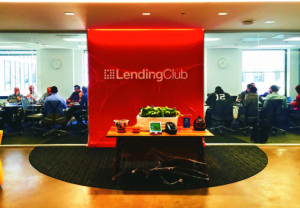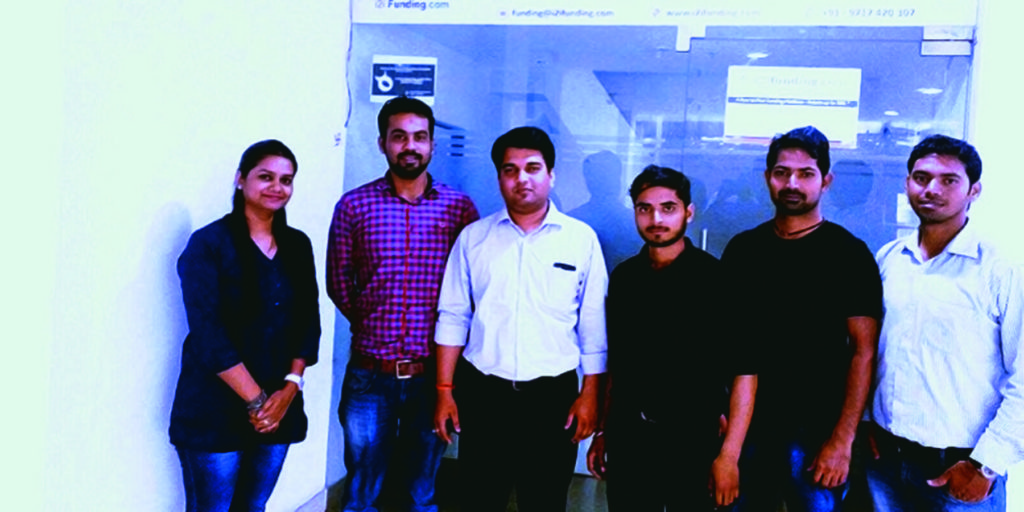RBI has recently announced that the hitherto unregulated P2P lending in India would come under regulation soon and for this purpose it has issued a consultation paper. What is P2P lending? Is it another version of money lending? A discussion
 P2P lending is in the news. The Reserve Bank of India has recently issued a consultation paper to the stakeholders of this form of alternative finance seeking to prohibit cross broder transactions and limit money transfer only between a lender and the borrower’s bank account. This, the regulator says, is aimed at eliminating money laundering. Besides, RBI is also proposing that P2P lending platforms must have a minimum capital – Rs2 crore – besides measures to contain indiscriminate leverage and limits on funding by a lender to a borrower in view of the fact that most of the borrowers using P2P platforms today are not conversant with the financial nuances. In addition, the consultation paper feels that no entity other than a company can undertake P2P lending activity. RBI ultimately wants to bring this sector under its regulations.
P2P lending is in the news. The Reserve Bank of India has recently issued a consultation paper to the stakeholders of this form of alternative finance seeking to prohibit cross broder transactions and limit money transfer only between a lender and the borrower’s bank account. This, the regulator says, is aimed at eliminating money laundering. Besides, RBI is also proposing that P2P lending platforms must have a minimum capital – Rs2 crore – besides measures to contain indiscriminate leverage and limits on funding by a lender to a borrower in view of the fact that most of the borrowers using P2P platforms today are not conversant with the financial nuances. In addition, the consultation paper feels that no entity other than a company can undertake P2P lending activity. RBI ultimately wants to bring this sector under its regulations.
So, why has P2P lending suddenly gained attention? Perhaps RBI feels that the sector is becoming popular and there could be scope for frauds, money laundering and other indiscriminate financial activity.
P2P lending in short can be described as an activity where lenders and borrowers, who are otherwise not eligible for availing the traditional mode of funding, can meet and facilitate transactions. These are often online platforms that match lenders with borrowers in order to provide unsecured loans. The borrower can be an individual who is requiring a loan and the lender may be someone who has funds and wants to beneficially invest the funds. The two meet on the P2P platform where the rate of interest can be set by mutual agreement between them. The platform gets a fee both from the borrower and the lender.
INTERMEDIARY
RBI wants that the platforms can be registered only as an intermediary limited to bringing the borrower and lender together without the lending and borrowing getting reflected on their balance sheet. The platforms will be prohibited from giving any assured return either directly or indirectly. Besides, these platforms will have to have effective risk management systems, business continuity plans and data backup. Similarly, the platforms would be required to take the responsibility for transparent operations, data confidentiality and minimum disclosures to borrowers and lenders.
The paper also mentions that it has been noticed that some of the platforms virually function as recovery agents for the lenders and it has suggested that recovery regulations applicable to NBFCs should be the norm for these platforms as well.
SOCIAL LENDING

At Lending Club headquarters in San Francisco
P2P lending, also called ‘social lending’ is a matured channel in several developed countries although 10 years ago there was no such channel existing. It is described as the practice of lending money to unrelated individuals, or ‘peers’, without going through a traditional financial intermediary such as a bank or other traditional financial institutions. It is a channel that can facilitate loans to borrowers with a good profile however with either low credit scores or a requirement that is not fulfilled through traditional financial institutions. The lenders here have the advantage that they get higher interest rates than traditional instruments. There is also the process of reverse auction possible, which determines the interest rates to be provided to the borrower.
The noteworthy P2P platforms across the world are Lending Club, Prosper, Kiva, Zopa, Fairplace, CreditEase, PPdai.com, Society One, i-Lend, Faircent, Indialends and India Money Mart.
In the US, there are two prominent P2P platforms – Lending Club and Prosper. They claim to help thousands of borrowers and lenders to connect to each other. What has contributed to their success is the fact that they make sure every borrower has creditworthiness and at the same time the lenders have an established record. While they help the lenders who are essentially investors to find ideal borrowers, they also help borrowrs to pay the loans back.
It has its own disadvantages. One is about the security of the funds given to a borrower. There is no guarantee that the borrower would repay the loan. This often leads to remedial measures such as high interest rates.
VIS A VIS BANK
There has been a comparison drawn between Wells Fargo and Prosper. Wells Fargo, has 270,000 employees and 9,000 branches nationwide. Prosper has just 240 employees spread across a few locations. Its operations are fully automated, and hence cost-effective compared to the operations of a bank.
P2P lending companies have shown remarkable growth in the last five years. It is said that to begin with Lending Club took over five years to issue $1 billion in loans. But today, it is managing to lend this amount every two months.
And these companies pass on part of their savings on account of lower operational expenses to their customers – better return for the lenders and comparatively lower rate of interest for borrowers.
SIMPLICITY
What attracts a person to a P2P lending platform is the fact that the process here is simple and quick. A borrower has

Founders of SocietyOne of Australia
just to fill in the information and submit documents to establish identity and once the loan is approved, it is instantaneously handed over. There are no other hassles. The one important factor that attracts an investor to this channel is the higher return. (In the US, this is calculated based on an algorithm that is designed with inputs on the default possibility, timely repayment and similar other factors and many investors consider the investment less risky than investments in stock market. The SEC has classified P2P lending as a security, which means these investments can be bought and sold on a secondary market. This enables an investor to back out of this investment by simply selling the loans on the secondary market and close the account. In fact it is a new asset class for an average person to invest. By diversifying the investment across 200 different borrowers, one can even mirror the overall default rate, gaining stability and consistency within the account.)
Normally, in P2P lending every lender and borrower can deal with multiple members. Some P2P lending platforms do not allow an individual to fund more than a certain percentage of a single borrower’s requirement to limit exposure risk.
PROCEDURES
So what is the procedure like?

As soon as a borrower and a lender have agreed on the terms of the offer, they create a loan contract. In countries where P2P lending has markedly developed, the money from each lender goes into an escrow account held by the platform. The loan is disbursed after a minimum amount has been collected and post-dated cheques towards EMI payments are received by the borrower. If the EMIs are delayed or not paid, the borrower is charged a penal interest. In case of default, the P2P lender assists with loan recovery.
Many Indian financial experts are of the view that P2P lending could pave the way for a better banking scenario. They believe that since lenders and borrowers interact with one another directly, there is virtual saving on intermediation costs. Similarly, it can help banks as the small ticket borrowers can be easily moved to this platform and banks can concentrate on large loans.
Is it akin to money lending? Not exactly, say these experts. It can be easily developed into a marketplace where individuals, small scale organizations and small businesses can easily avail finance without the rigmarole of collaterals, security pledges and hypothecations. It also has the advantage of an audit trail. And once RBI brings in the required regulations for the sector, it can easily be another pillar in the BFSI spectrum. However, several of them feel there could be a cap on the interest rates offered by these players and the amount offered as loan to a single entity.
One concern that the experts have is the fact that this segment does not at this point of time afford to have the luxury of accepting deposits unlike NBFCs and other financial services entities. It is in this context that the RBI stipulation that P2P lending platforms should have a capital of Rs 2 crore.
GROWTH IN INDIA
India has been seeing a steady growth in the number of P2P platforms. In 2016 alone there were 20 new firms have come into being, according to information gathered by a well known data analytics company. In total, there are 30 companies in the country. However, India is making a very slow start as the number of such companies in developed markets are quite high – in China their number is said to have crossed 3000.
These 30-odd companies are broadly offering consumer loans, loans to SMEs and MSMEs, commercial loans and personal loans. To some extent, they are also offering educational loans. Some of the important players are Faircent, Loanmeet, i-lend, LenDen Club and i2i Funding. A borrower can get loans from Rs25,000 to Rs30 lakh – personal loans of up to Rs 5 lakh or a business loan of up to Rs30 lakh. The loan tenure could be six months to 5 years while the interest rates could be from 12% to 36% depending on the credit profile of the borrower. The lending platforms evaluate the borrower in terms of credit reports from credit bureaus, bank statements and salary statements. The companies levy a fee for processing the loan and it can be anything from Rs500 to Rs2000. Some companies charge a percentage of the loan amount as a one-time fee. Mostly there is no pre-payment charges in case a borrower opts to prepay the loan. Delayed payments as well as non-repayments of EMIs attact additional charges, which can be really high.
A customer has to register himself with the concerned platform before he avails a loan. The required amount can be specified and each borrower has a page of his own where the details such as the loan amount required, purpose for which it is required, financial status, employer details etc are also to be filled in. Once this process is through, a verification is carried out. The details are then exposed to the lenders, who would approach the borrower online through the portal. Often a single loan can be provided by multiple lenders.
GLOBAL SCENARIO
Against this, the global scenario is something like this:
P2P lending is an important source of cheaper fund-raising for people or businesses, especially those who may not be able to borrow from banks. According to an industry association, global P2P lending has grown to approximately $20 billion in 2015and it is projected to reach $150 billion+ by 2025. While almost all countries in the world allow this model, Japan and Israel are are among those which have banned it.
Many industry watchers believe P2P lending may develop in India in a different way. This may be because of the regulatory enviroment in the country. It could develop itself into a comprehensive online loan platform system where apart from individual investors, even recognised and registered lenders may also be present to distribute non-collateralized, small loans affordably. One challenge, according to them, could be the collation of data for credit information companies. These platforms must then be made to perforce file this data as otherwise there could be major shortcomings.
Venture Catalysts, an angel investment firm which has funded LenDen Club, is of the view that P2P lending space is expected to become a $4-5 billion market within the next three to five years and it is considered to be high risk-return investment.
GLOBAL PICTURE

Everything in P2P lending depends of technology
No doubt, the P2P lending industry is posed for significant growth, especially in developed countries. The US has one of the largest P2P lending markets in the world by loan volume, but the UK’s is 72% larger on a per capita basis. Europe is the next big market – while the alternative finance market in Europe reached nearly $3.9 billion in 2014, a 144% jump, and small-business P2P loan volume in France grew almost 4,000% last year, to reach $10.6 million.
There are reports that Germany’s Commerzbank plans to launch its own P2P lending marketplace called ‘Main Funders’ soon. It is expected to connect SMEs seeking funding with investors. The name ‘Main Funders’ is a wordplay as ‘Main’ is the name of the river passing through Frankfurt, where the bank has its headquarter. The service is developed together with Main Incubator, the fintech incubator of Commerzbank. Under German regulation only banks can fund loans. To comply with this all existing P2P lending companies in Germany partner with a transaction bank which originates the loan and then sells the proceeds to the investors. So far a handful of small specialized banks were involved in these transaction.
Similarly, Singapore’s DBS Bank said it has signed cross-referral agreements with two local P2P lending platforms, Funding Societies and MoolahSense, in a first-of-its-kind collaboration between established financial institutions and emerging fintechs (financial technology startups). The partnership enables DBS to refer to these lending platforms some of the smaller businesses that the bank is unable to lend to. In return, these lending platforms will refer borrowers who have completed two successful rounds of fund-raising to DBS for larger commercial loans and other financial solutions such as cash management.
Meanwhile, banking experts in India have welcomed the RBI’s discussion paper saying bringing this nascent industry under regulation would help it flourish and at the same time create an environment for proper credit flow in the country, especially to the unbanked and underbanked sectors. RBI has made it clear that it will not regulate them directly but they will be governed by the Companies Act.







